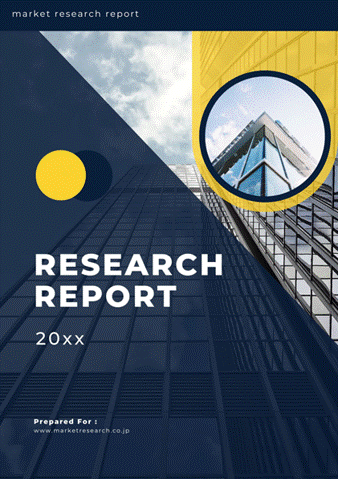 | • レポートコード:MRC2203A629 • 出版社/出版日:Mordor Intelligence / 2022年1月 • レポート形態:英文、PDF、129ページ • 納品方法:Eメール(受注後2-3営業日) • 産業分類:農業 |
| Single User | ¥703,000 (USD4,750) | ▷ お問い合わせ |
| Site Licence | ¥962,000 (USD6,500) | ▷ お問い合わせ |
| Corporate License | ¥1,295,000 (USD8,750) | ▷ お問い合わせ |
• お支払方法:銀行振込(納品後、ご請求書送付)
レポート概要
| Mordor Intelligence社は、世界の農業用抗菌剤市場規模が予測期間中に年平均3.8%成長すると予測しています。本調査資料では、農業用抗菌剤の世界市場について調査・分析し、イントロダクション、調査手法、エグゼクティブサマリー、市場動向、種類別(銅ベース抗菌剤、ジチオカルバメート、アミド、抗生物質、その他)分析、作物別(穀類、油糧種子&豆類、果物&野菜、商品作物、芝&観賞植物)分析、形態別(液体、液体-分散性顆粒、水和剤)分析、地域別(北米、ヨーロッパ、アジア太平洋、南米、アフリカ)分析、競争状況、市場機会・将来の傾向などの項目を掲載しています。 ・イントロダクション ・調査手法 ・エグゼクティブサマリー ・市場動向 ・世界の農業用抗菌剤市場規模:種類別(銅ベース抗菌剤、ジチオカルバメート、アミド、抗生物質、その他) ・世界の農業用抗菌剤市場規模:作物別(穀類、油糧種子&豆類、果物&野菜、商品作物、芝&観賞植物) ・世界の農業用抗菌剤市場規模:形態別(液体、液体-分散性顆粒、水和剤) ・世界の農業用抗菌剤市場規模:地域別(北米、ヨーロッパ、アジア太平洋、南米、アフリカ) ・競争状況(BASF SE、Syngenta International AG、OHP Inc.、...) ・市場機会・将来の傾向 |
The global agricultural antibacterial market is projected to register a CAGR of 3.8% during the forecast period.
Key Highlights
- Increasing demand for food, challenging environmental factors and decreasing per capita farmland are the major factors that are driving the market.
- Europe is one of the largest markets for the agricultural antibacterial market holding a major market share of the total revenue.
- Key players have concentrated their major R&D efforts to develop products conforming to the European regulations for antibacterial, since these regulations are considered to be benchmarks in terms of quality and environmental impacts.
Key Market Trends
Growing Demand for Food and Shrinking Arable Land Per Capita
The global population is increasing exponentially, according to the US Population Division, the world’s human population has increased nearly fourfold in the past 100 years and is projected to reach 9.2 billion by 2050. Although the new plant technologies are continuously being developed to fight pest attacks, they are also leading to the development of new strains of pests developing resistance to the technology. According to the World Bank data, the arable land per capita has decreased from 0.195 in 2014 to 0.192 in 2016 which indicates a need to apply antibacterial to increase food production and also to grow healthy and quality crops. According to the UN Population Division, the largest population increase is projected to occur in Asia (particularly in India, China, and Southeast Asia), accounting for 60% or more of the global population, by 2050. Large quantities of crop protection chemicals are expected to be required in this region, in order to increase food production for the growing population.
Asia-Pacific is the Fastest Growing Market
The demand for antibacterials is projected to rise in the Asia Pacific region, particularly in China, India, and Japan. The increase in agricultural activities coupled with the rise in demand for quality crops is driving the growth of the antibacterial market in agriculture. The countries in this region have observed an increase in the consumption of antibacterial, due to the increasing awareness among farmers related to the effects of bacterial infections on crop yields. Europe is one of the largest contributors to the global antibacterial market in agriculture due to the increase in the use of antibacterial products through advanced agricultural techniques and a rise in the need for food security in the European countries. Italy and France constituted one of the largest country-level markets in the European region in 2019.
Competitive Landscape
The agricultural antibacterial market is a fragmented market dominated by a few major players like BASF SE, Syngenta, Nufarm, Bayer CropScience, and Corteva Agriscience. Mergers, acquisitions, partnerships, expansion, innovation are some of the strategies adopted by the major players in the market.
Additional Benefits:
- The market estimate (ME) sheet in Excel format
- 3 months of analyst support
1 INTRODUCTION
1.1 Study Deliverables
1.2 Study Assumptions
1.3 Scope of the Study
2 RESEARCH METHODOLOGY
3 EXECUTIVE SUMMARY
4 MARKET DYNAMICS
4.1 Market Overview
4.2 Market Drivers
4.3 Market Restraints
4.4 Porter’s Five Forces Analysis
4.4.1 Bargaining Power of Suppliers
4.4.2 Bargaining Power of Buyers/Consumers
4.4.3 Threat of New Entrants
4.4.4 Threat of Substitute Products
4.4.5 Intensity of Competitive Rivalry
5 MARKET SEGMENTATION
5.1 Type
5.1.1 Copper-based Antibacterials
5.1.2 Dithiocarbamates
5.1.3 Amides
5.1.4 Antibiotics
5.1.5 Other Types
5.2 Crop
5.2.1 Cereals & Grains
5.2.2 Oilseeds & Pulses
5.2.3 Fruits & Vegetables
5.2.4 Commercial Crops
5.2.5 Turf & Ornamentals
5.3 Form
5.3.1 Liquid
5.3.2 Liquid-Dispersible Granules
5.3.3 Wettable Powder
5.4 Geography
5.4.1 North America
5.4.1.1 United States
5.4.1.2 Canada
5.4.1.3 Mexico
5.4.1.4 Rest of North America
5.4.2 Europe
5.4.2.1 Germany
5.4.2.2 United Kingdom
5.4.2.3 France
5.4.2.4 Russia
5.4.2.5 Spain
5.4.2.6 Rest of Europe
5.4.3 Asia Pacific
5.4.3.1 India
5.4.3.2 China
5.4.3.3 Japan
5.4.3.4 Rest of Asia-Pacific
5.4.4 South America
5.4.4.1 Brazil
5.4.4.2 Rest of South America
5.4.5 Africa
5.4.5.1 South Africa
5.4.5.2 Rest of Africa
6 COMPETITIVE LANDSCAPE
6.1 Most adopted strategies
6.2 Mergers & Acquisitions
6.3 Company Profiles
6.3.1 BASF SE
6.3.2 Syngenta International AG
6.3.3 OHP Inc.
6.3.4 Valent BioScience LLC
6.3.5 Nufarm Limited
6.3.6 Corteva Agriscience
6.3.7 Bayer CropScience
6.3.8 Sumitomo Chemicals Co Ltd
6.3.9 Nippon Soda Co Ltd
6.3.10 FMC Corporation
7 MARKET OPPORTUNITIES AND FUTURE TRENDS